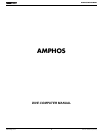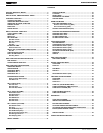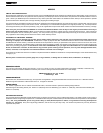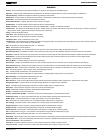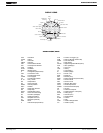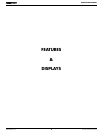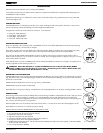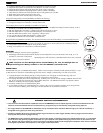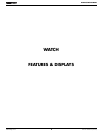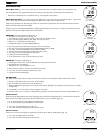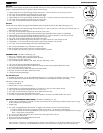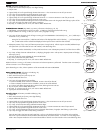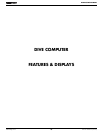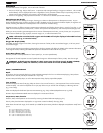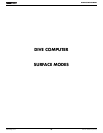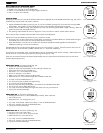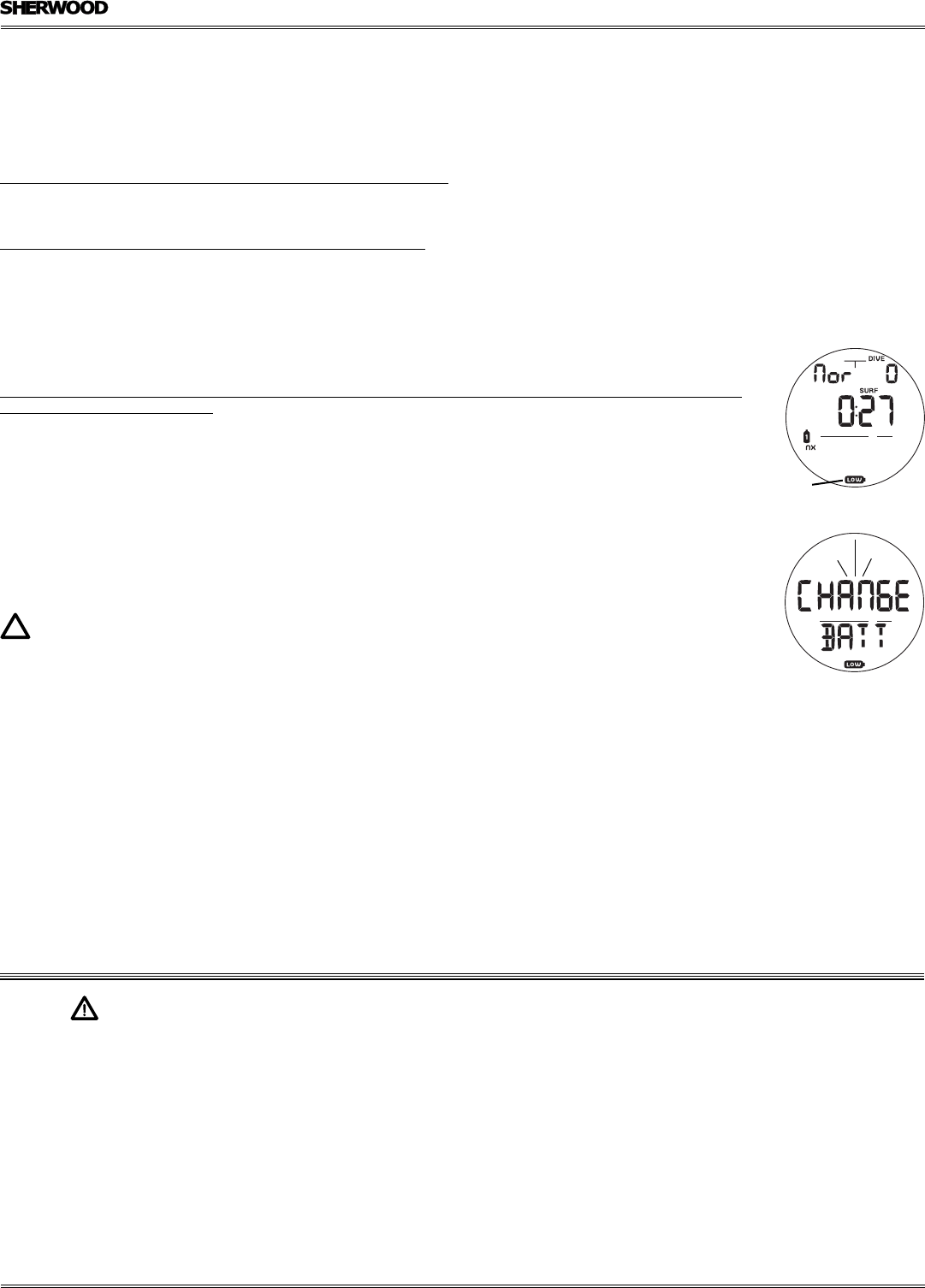
8
AMPHOS DC MANUAL
© 2002 Design, 2012 Doc. No. 12-5301-r01 (12/17/12)
• Conditional Violation (above a required Deco Stop Depth for less than 5 minutes).
• Delayed Violation (above a required Deco Stop Depth for more than 5 minutes).
• Delayed Violation (a Deco Stop Depth greater than 60 FT/18 M is required).
• Delayed Violation (Maximum Operating Depth of 330 FT/100 M is exceeded).
• A Gas Switch to another tank would expose the diver to PO2 greater than 1.60 ATA.
• Watch Daily Alarm reaches time set (on surface only).
• Watch Countdown Timer reaches 0:00 (on surface only).
A single short beep (which cannot be disabled) is emitted for the following -
• Upon completion of a battery change.
• Change from Delayed to Full Violation 5 minutes after the dive.
3 short beeps (which cannot be disabled) are emitted for the following -
• NORM/GAUG Ascent Rate Warning - rate is 51 to 60 FPM (15.1 to 18 MPM) when deeper than 60 FT (18 M), or 26 to
30 FPM (7.5 to 9 MPM) at 60 FT (18 M) and shallower.
• FREE Dive Elapsed Dive Time Alarm - 3 beeps at each 30 second interval, if set On.
• FREE Dive Depth Alarms 1/2/3 (set sequentially deeper) - each 3 beeps 3 times.
• FREE Dive NIBG Alarm (Caution zone, 4 segments) - 3 beeps 3 times.
• Entry into Deco during a FREE Dive (Violation) - 3 beeps 3 times.
• Free Mode Countdown Timer reaches 0:00 - 3 beeps 3 times.
During the following NORM Dive situations, the 10 second continuous tone will be followed by a 5 second steady beep that
cannot be acknowledged/silenced -
• Ascending above a required Decompression Stop Depth for more than 5 minutes (referred to as a Delayed Violation).
• Decompression requires a Stop Depth of 70 FT (21 M) or deeper.
• Being on the Surface for 5 minutes after a Conditional Violation.
BACKLIGHT
To activate the Backlight, press the L (lower/right) button.
• The Backlight will activate and illuminate the display for button depression time* plus the Duration time set (0, 5, or 10
seconds) for a maximum of 20 seconds.
*The Backlight turns Off if the button is held depressed for more than 10 seconds.
• Press L again to activate as desired.
NOTE: Extensive use of the Backlight reduces estimated Battery life. Also, the Backlight does not
operate during a Low Battery condition or when the AMPHOS is connected to a PC.
POWER SUPPLY
The AMPHOS uses (1) 3 volt CR2430 Lithium Battery. Used as a Dive Computer, the battery should operate normally for 1 year
or 300 dive hours if 2 dives are conducted during each dive period. Voltage is checked every 2 minutes on the surface.
• If voltage decreases to the Warning level (2.75 volts), the Battery icon will appear on Surface Main (Fig. 3a) as an
indication that the Battery should be changed prior to commencing a series of dives.
• If the voltage decreases to the Alarm level (2.50 volts), the Battery icon will flash and the message CHANGE BATT will flash
(Fig. 4) for 5 seconds, then operation will revert to Watch Main Time. The AMPHOS would then only operate in Watch
modes until the Battery becomes completely depleted.
• Low Battery conditions are not displayed during dives.
• If a Low Battery Condition was not displayed prior to starting a Dive, and a Low Battery Condition occurs during the dive,
there will be sufficient Battery power remaining to maintain operation for the remainder of that dive.
Fig. 4 - LOW BATTERY
ALARM
Fig. 3 - LOW BATTERY
WARNING
a
• It should not be considered that the capabilities built into the AMPHOS provide an implied approval or consent from Sherwood for indi-
viduals to exceed the dened limits for recreational diving, as agreed on by all internationally recognized training agencies.
• The oxygen features of the AMPHOS are intended for use by recreational divers trained for Nitrox diving by an instructor certied by a
recognized training agency to teach diving with Nitrox.
• Conducting repetitive dives using enriched nitrogen-oxygen mixtures can lead to oxygen buildup, reducing oxygen tolerance while in-
creasing the risk of pulmonary oxygen toxicity.
• The AMPHOS provides information based upon a personal dive prole, and therefore must not be shared between divers. It is impossible
for two divers to stay precisely together underwater, and your computer's dive prole tracking of previous dives will be pertinent to you
only. Nitrogen and oxygen loading of a second user may be signicantly different and swapping dive computers could lead to inaccurate
and dangerous predictions of decompression and oxygen accumulation status.
WARNINGS AND SAFETY RECOMMENDATIONS



